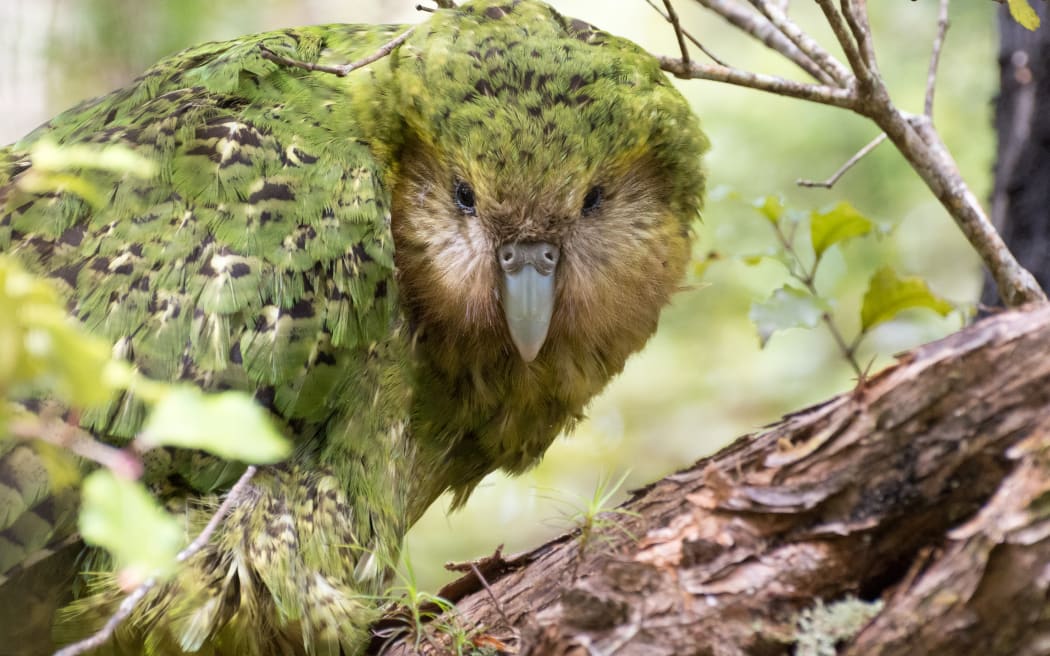Our bumbling nocturnal parrot is easy to love, and easy to root for. But there are more native species in desperate need of conservation attention.

Before the new arrivals at Maungatautari, kākāpō were only found on three islands: Whenua Hou, near Stewart island; Pukenui, in Fiordland; and Little Barrier Island in the Hauraki Gulf. Photo: Jake Osborne
On a fenced native reserve in the middle of the North Island, an experiment is underway which could have huge repercussions for our native wildlife.
Four kākāpō have just arrived at Sanctuary Mountain Maungatautari near Cambridge, the first time the species has been back on mainland New Zealand in nearly 40 years.
It has taken a lot of work and money to get them there, including a new kākāpō-proof fence costing nearly $1 million, because the existing predator fence wasn't secure enough to keep the precious birds safe.
These taonga are also there because there's no room for them on the predator-free islands the other 240-odd kākāpō inhabit. The kākāpō recovery programme has been highly successful, but a lot more predator eradication is needed before they can start breeding on the mainland again, says Alison Ballance, a conservationist and journalist.
"The four young males that they've got there are basically surplus to requirement. Their genes are already widely represented in the population, they don't need them for breeding in the near future, so they're a bit of a trial," she says.
The increasing numbers of kākāpō have left conservationists with a problem.
"Not only are there not enough islands, but there's very few places on the mainland that are big enough," Ballance tells The Detail.
She calls the programme to save the kākāpō miraculous but points out it has been well-resourced because it is such a unique kind of bird. Those same resources are not available for other birds.
"There's hundreds of other bird species out there that are not doing so well and we can't jam them all into Maungatautari to keep them safe," Ballance says.
She says Predator Free 2050 is the best hope for saving many of the native birds.
"If we could pull that off, even if not by 2050, but some time soon after that, that would be a game changer for our native birds."
Forest & Bird chief executive Nicola Toki says New Zealanders are not taking the threat to native species seriously and a lot more money has to be spent on saving them.
"We have dropped the ball in New Zealand, because we say we're all about our wildlife – it's all over our tea towels and our t-shirts and our art and all of that stuff – but we don't put our money where our mouth is," she says.
Toki points out the $29m allocated to the Department of Conservation's species protection programme, covering birds and other species, is the same amount that the Inland Revenue Department wanted to upgrade its offices.
"I sound grumpy, and I probably am a little bit, because as we are hurtling towards a general election and we are seeing all around us the impacts of biodiversity loss and the impacts of climate change, not one political leader has mentioned either of those things in any kind of meaningful way. It's disgraceful and irresponsible," she says.
She tells The Detail that not every bird needs the same hands-on effort kākāpō has received to keep it alive, but there are many that get no attention. She cites the southern dotterel on Rakiura Stewart Island as an example.
"It's on an island, it's being plagued by predators and it's having both its habitat and its eggs destroyed by deer and we're not talking about that. I find it incredible."
Check out how to listen to and follow The Detail here.
You can also stay up-to-date by liking us on Facebook or following us on Twitter.

Photo:


